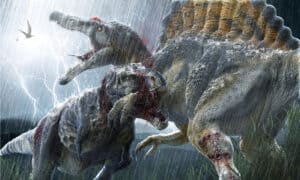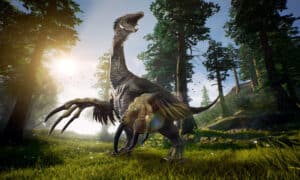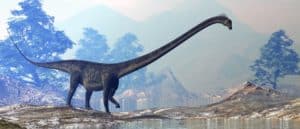The Ordovician Period is a 45 million years period during the Paleozoic Era. It is the second period of the era, starting about 485.4 million years ago and ending around 443.8 million years ago. The Ordovician rocks were first observed in Wales. The name was derived from a tribe of people who lived in that area at that time.
One of the major characteristics of the Ordovician Period is the appearance of a wide variety of marine organisms and the planet’s first primitive plants. However, the period ended with a mass extinction that wiped out the majority of lifeforms at the time.
Ordovician Period — Timeline
The Ordovician Period is the second period of the Paleozoic Era (the first and longest era of the Phanerozoic eon). The era began about 541 million years ago with the Cambrian explosion, which saw the rise and diversity of many of earth’s organisms.
The Ordovician is the second period of that era. It follows the Cambrian Period, which ended about 485.4 million years ago and ended at the start of the Silurian Period about 443.8 million years ago. Ordovician rocks are commonly seen at the planet’s highest peaks, such as Mount Everest.
Major Events of the Ordovician Period
The period saw an abundance of diverse marine lifeforms. However, major changes also occurred regarding the plate tectonics, climate, and ecological systems of the plant. Some of the major events that occurred during the Ordovician Period are listed below.
Global Flooding
The Paleozoic Era is generally characterized by falling and rising sea levels. For most of the era, most continents were completely underwater. However, some of the highest sea levels occurred during this section of the Phanerozoic eon. Consequently, the continents were flooded. In fact, much of the entire continent of North America was covered by water. A good thing that came out of this is the extraordinary preservation of several fossils since the seas deposited a blanket of sediments that aided fossil preservation.
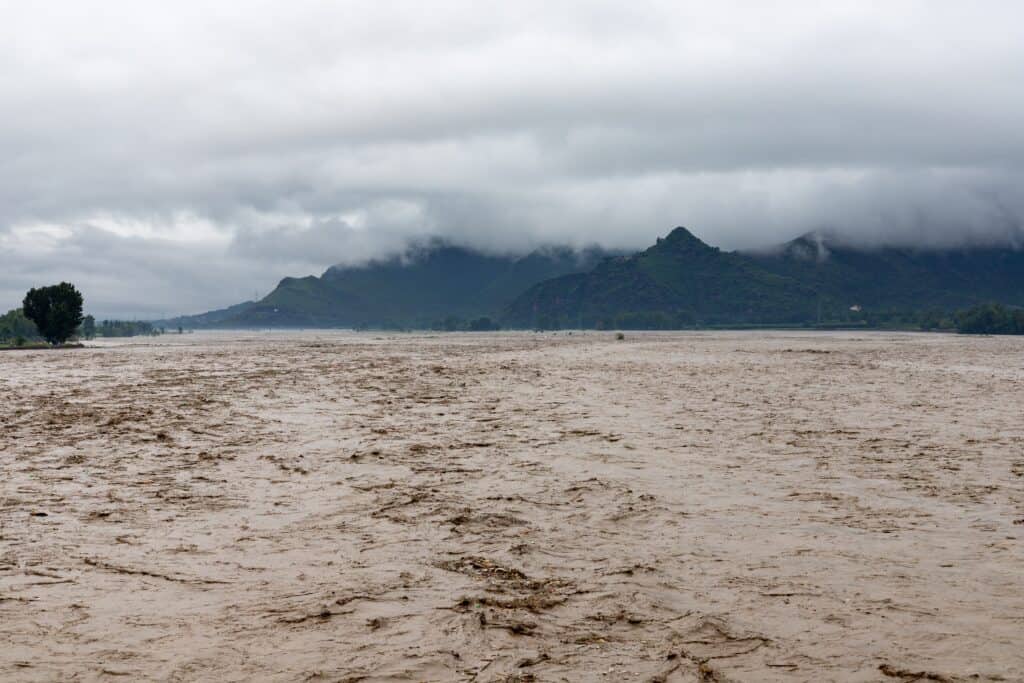
The Ordovician period was characterized by major, worldwide flooding.
©Bilalstock/Shutterstock.com
Formation of Gondwana and Laurentia
During the early part of the Ordovician, most of the planet’s landmasses collided to form a supercontinent. This was after the first unified landmass broke up at the start of the Paleozoic Era.
During the Ordovician, plate tectonics caused the land masses to form a supercontinent known as Gondwana. This continent was formed by the landmass of Africa, South America, Australia, and Antarctica. After uniting into a single landmass, the newly formed supercontinent gradually drifted southwards throughout the Ordovician until it reached the south pole. At the same time, the landmass that would later become North America began to form and combine with other landforms to create Laurentia. This continent was on the equator and separated from Gondwana by the narrow Iapetus Ocean.
The Ordovician Extinction
This is the first severe mass extinction in the earth’s geologic history. It occurred at the end of the Ordovician Period when most life forms were restricted to the seas. This event entirely wiped out many species of brachiopods, trilobites, bivalves, and coral groups.
Scientists believe that the movement of Gondwana to the southern hemisphere of the earth caused the event. The migration resulted in the formation of large glaciers, which subsequently caused a reduction in the sea level. The glaciation evidence can be found as glacial deposits in many parts of the planet, including the Sahara Desert.
The low sea level and the cold temperature of the water bodies destroyed several habitats. The beginning of the late Ordovician ice age and changes in the water composition may have also contributed to the event.
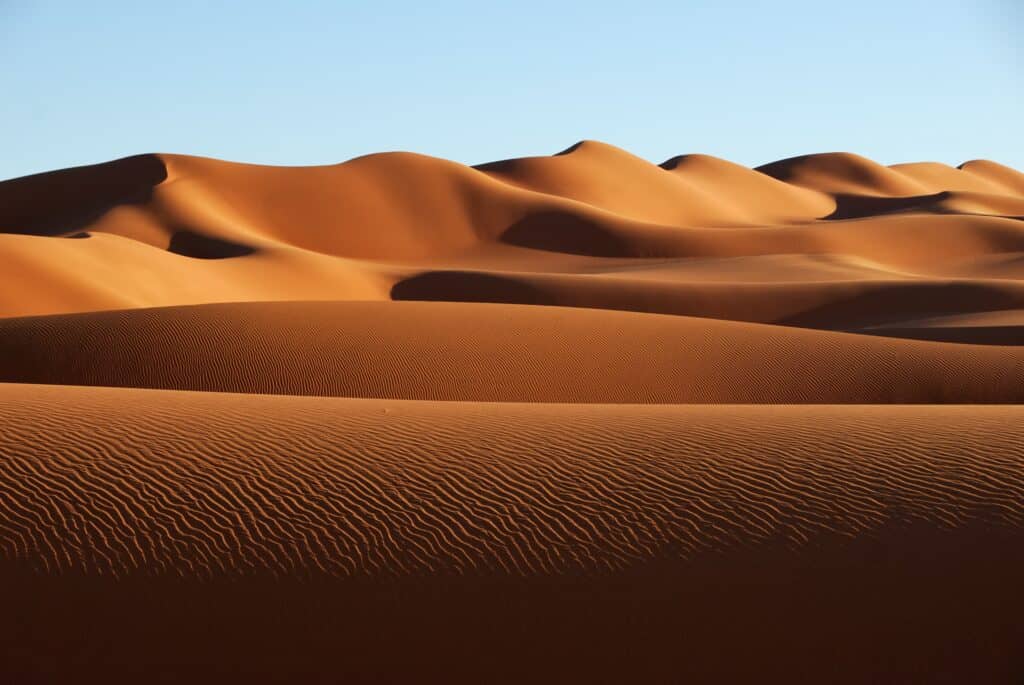
Glacial deposits in the Sahara Desert may be evidence of the mass extinctions that occurred in the Ordovician Period.
©MrLis/Shutterstock.com
The Ordovician Climate
At first, the climate fluctuated between periods of warm conditions and periodic cold. The air and water temperatures were about 120 degrees Fahrenheit and 110 degrees Fahrenheit on average at the equator. The high concentration of carbon dioxide at the time may have been why the temperatures were that high. This may have caused the delay in organism diversification in the early Ordovician Period. However, the temperature dropped significantly due to the glaciers that formed towards the end of the period.
Life of the Ordovician Period
Many species emerged in place of their Cambrian ancestors in the Ordovician period. Although not as much as during the Cambrian explosion, marine life still multiplied fourfold. The majority of life that existed during the Ordovician period was marine. Though not as advanced as what we have now, Ordovician life was more developed than that of the Cambrian period. The Ordovician organisms included articulate brachiopods, corals, bryozoans, gastropods, and non-vascular plants.
Marine Life
There was the formation of new species in the Ordovician. The cephalopods were the major predators at this time. Their modern relatives are squids and octopuses. One of the most popular ones was the Orthoceras. This was a strange creature with its feet projecting outwards from its head. There were also brachiopods characterized by bilaterally symmetrical shells. Other invertebrates that populated the Ordovician waters were sponges, corals, and primitive fish.
The living fish species at the time were small and jawless. The fish were referred to as agnathans which translates as jawless fish. They fed on organic matter on the seafloor by sucking and filtering them in. They had tiny shield covers on the frontal part of their bodies. An example of the Ordovician fish is the Ostracoderm. The descendants of these armored fish that exist today are the lampreys and hagfish.
Echinoderms were at their highest diversity (20 classes) during the Ordovician. Crinoids were the most popular during this period. They looked like feathery plants and attached themselves with stems to the ocean floor while their tentacles floated in the water.
The fossils of Ordovician annelids were primarily small calcareous tubes with tiny phosphate jaws in addition to their trace fossils. Ostracods, branchiopods, barnacles, phyllocarid shrimp, aglaspids, and eurypterids represented the Ordovician arthropods. The trilobites survived the Late Cambrian extinction and thrived into the Ordovician period. They were just not as dominant as they were in the former period.
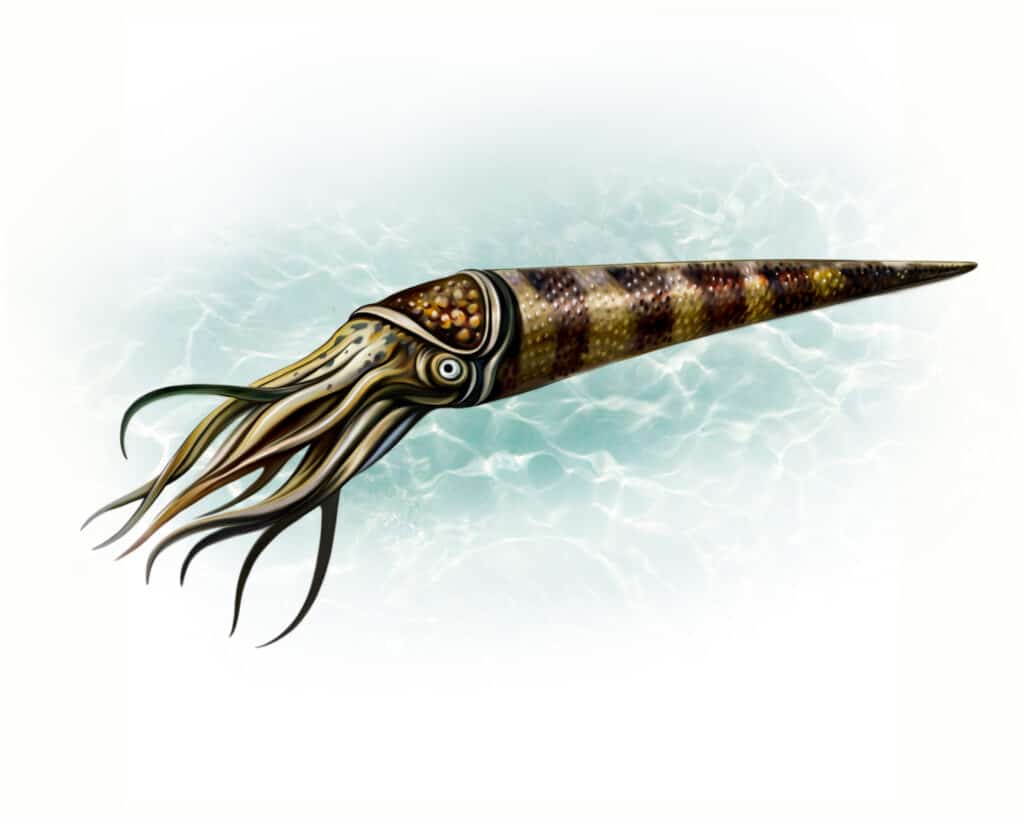
The Orthoceras was a major new species of cephalopod to emerge during the the Ordovician Period.
©Liliya Butenko/Shutterstock.com
Terrestrial Life
There was little to no life on earth during the Ordovician Period. It was composed primarily of prehistoric plants at the waterline regions of coasts. They were non-vascular and were made up of mostly mosses and bryophytes. Microscopic green algae lived over or just beneath the surface of water bodies. They could only survive in a watery environment because that was the only way they could survive.
The direct water into and outside of their microscopic cells ensured their survival. Although they were underdeveloped, they were true plants due to chlorophyll’s presence used to prepare their food. The Ordovician microscopic fungi were present too. They fed on decaying matter. The combination of fungi and algae on the land formed lichen.
Even though solitary corals were already in existence, the first set of coral reefs appeared in the Ordovician too. The bryozoans evolved during this period and still form an important group of present-day marine life forms.
After the Ordovician extinction, extensive species of trilobites and graptolites were wiped out. The brachiopods, corals, and crinoids survived despite the loss of significant families.
Up Next:
- The Cretaceous Period: Major Events, Animals, and When It Lasted
- Ancient Oddities: 8 Extinct Sea Creatures
- How Old are the Appalachian Mountains?
The photo featured at the top of this post is © Esteban De Armas/Shutterstock.com
Sources
Thank you for reading! Have some feedback for us? Contact the AZ Animals editorial team.




